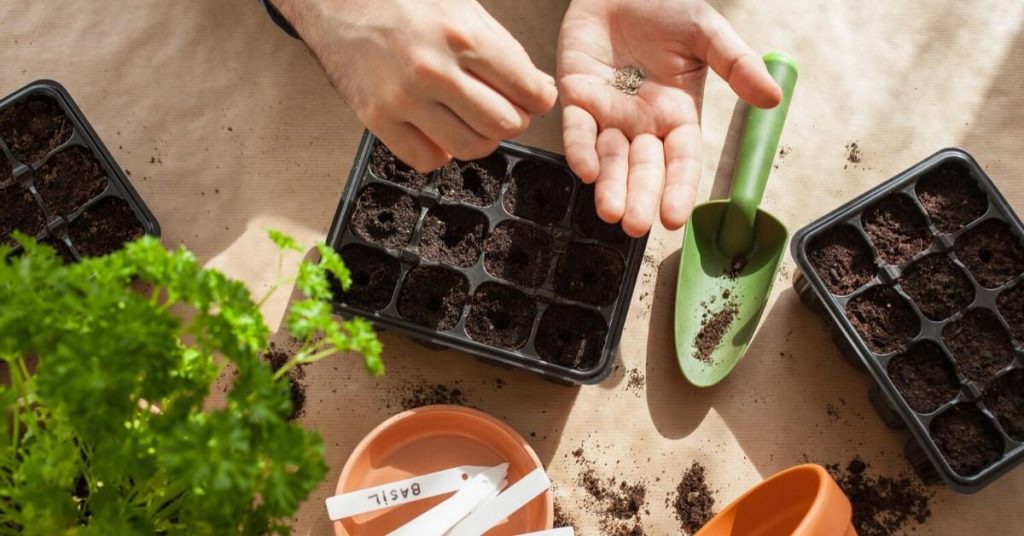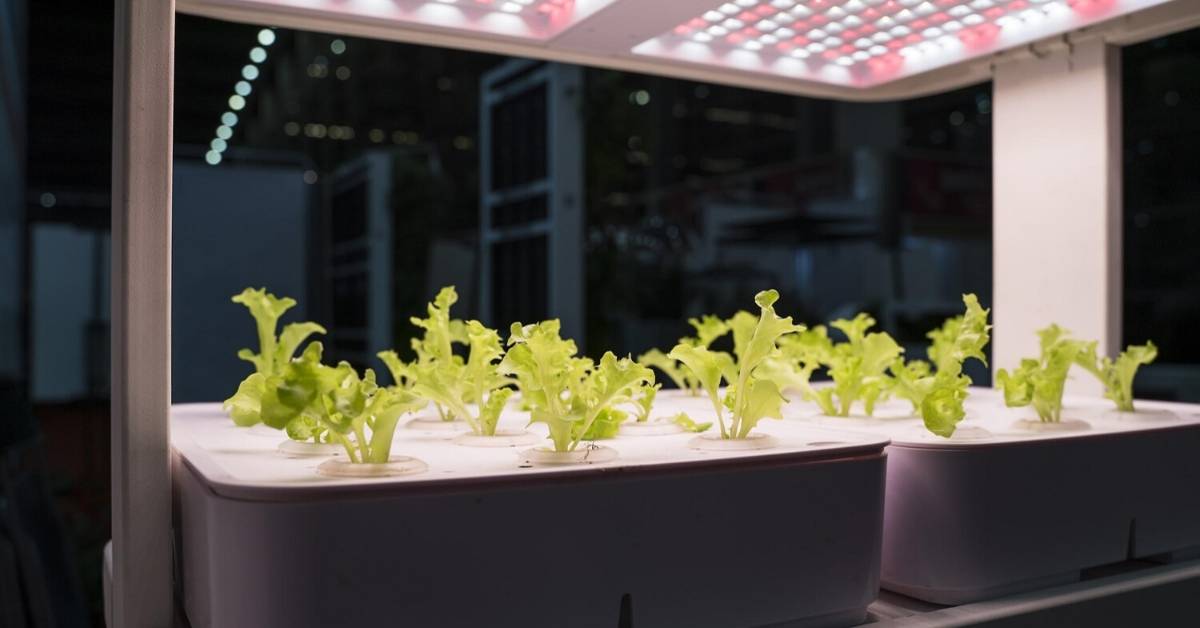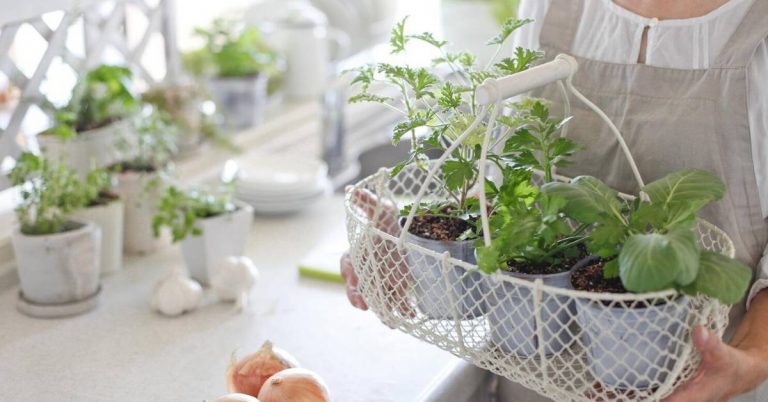Every spring brings a fresh chance to start a garden or grow your own food, and this spring is no different—whether you’re simply seeking a new hobby or finding yourself with extra time on your hands at home and lacking fresh produce. If you think you have to be some sort of master gardener with a full backyard plot to start a vegetable garden, think again!
In reality, if you have a couple of sunny windowsills and a handful of garden supplies, it’s easy to find the time and space to begin container vegetable gardening. Wondering how to achieve a DIY indoor garden? Once you discover how easy it is to grow common herbs and vegetables indoors, you won’t be able to contain yourself.
How to Start a Vegetable Garden at Home
Even if you’re short on space in your house or apartment, having a container garden indoors—or out on the porch—is a perfect opportunity to produce delicious tomatoes for your salads or herbs that add a homegrown dash of seasoning to your dishes. Plus, thanks to many plants’ low-maintenance growing requirements, this is a hobby that can be both relaxing and rewarding.
Before you get to watch it grow, there are a few basic steps to setting up your container garden:
1. Assess how much space you have.
2. Gather pots, seeds, soil, and other supplies.
3. Find some sunny windowsills.
4. Consider adding grow lights.
5. Keep the soil moist and plants properly watered.
Evaluate the Amount of Space You’ll Need
Whatever spot you choose for your garden to take root, make sure it’s a place where plenty of sunlight can come through. Having adequate space for your garden may require taking advantage of storage in your home or a storage unit. If you’re extending your container garden to an outdoor area such as your balcony or patio, you’ll obviously have more space flexibility than with your indoor garden. For those fortunate enough to have one, sunrooms are just about the best place for growing vegetables in your home.
Pick Your Plants and Pots
Many vegetables can thrive in container gardens, but of course, some are easier to care for than others. For instance, full-size vegetables with deeper roots are going to require more space and may pose more difficulties. It’s also common for gardeners to grow herbs in window boxes and cherry tomatoes in hanging baskets. Plan your containers around which vegetables you will be growing.
Easy Vegetables to Grow in Containers
When it comes to picking and planting your vegetables, you can purchase either seeds or seedlings (or seeds that have sprouted). Although starting your own seeds is less expensive, it requires a lot more patience, attention, and TLC at the beginning.

Some of the easiest and most common vegetables and herbs to grow indoors in containers include:
● Tomatoes
● Carrots
● Radishes
● Hot peppers
● Scallions
● Salad greens (lettuce, spinach, etc.)
● Microgreens
● Basil
● Oregano
Kinds of Containers for Your Indoor Garden
This step will be more “choosing” than “doing,” so have fun with it! Essentially, any container with drainage holes at the bottom will do. If you’re DIY-spirited, you may even be able to find the perfect home for your plants somewhere around the house. As you choose, though, keep in mind that roots need plenty of room to grow. Thus, avoid small containers where possible; the bigger the better. Square bottoms can help encourage roots to spread out, too.
Some different options of containers for indoor vegetable gardens include:
● Baskets
● Buckets
● Half-barrels
● Large flower pots
● Planters
● Troughs
● Tubs
● Wooden window boxes
Select the Right Soil
A successful indoor vegetable garden all begins with quality soil. There’s no need to go digging in your backyard or outdoor garden for it (and actually, don’t—regular garden soil will introduce weeds and won’t drain water well).
Potting soil designed specifically for indoor use and edible gardening is ideal. If it doesn’t already come integrated with fertilizer, mix some organic, granular fertilizer into the soil before planting your vegetables, then reapply as directed. Leave a few inches for water overflow at the top of each pot.
Find the Sunniest Spot
Unlike other kinds of houseplants, vegetables grown indoors need about all the sun they can get. After you start planting your containers, place them in front of the sunniest windowsills or doors around your home. The vegetables will need five or more hours of sunlight per day—but if you’re really ambitious and growing fruit indoors as well, those will need twice the time in the sunshine.
Note that if you reside in a very warm gardening zone, avoid using dark plastic or metal containers because they can get too hot and overheat your plants. If you live in a cooler climate and want to place your plants out on a porch, make certain that outdoor temperatures are consistently warm enough.
Grow lights are also a relatively affordable gardening investment if you’re struggling to harness enough sunlight, particularly if you sowed your own seeds and grew your veggies from the soil up. They provide more powerful warmth and light, providing a boost to your plants during dreary days or seasons.

Water Wisely and Monitor Soil Moisture
Watering your indoor edible garden isn’t a one-size-fits-all technique; every plant will differ slightly, and there may be some trial and error. Plants like tomatoes, for example, need quite a bit of water.
When in doubt, opt for too little than potentially too much. However, in general, you’ll want to keep the soil moist but never soaked. A good rule of thumb (quite literally) is to stick your finger about an inch into the soil: If it feels dry, it’s time to water, and if you’re unsure, check back later until it’s dry enough to warrant a watering.
Clear the Way for DIY Gardening at Home
Establishing an indoor edible garden requires work and patience at the beginning—but once it comes to fruition, you’ll realize how attainable and self-sustainable it is. Perhaps you have grand plans to grow all the herbs and vegetables that you can at home, or maybe you’ve already begun. Ensuring that your plants have room to continuously thrive is vital to their health and the success of your hobby.
At StorageMart, we know it’s no easy feat to find the space to maximize your time at home, which is why we offer a full range of self storage solutions for your lifestyle—from garden tool storage tips to a variety of clean, secure storage units near you. Browse online to find what you’re looking for today, or contact us with any questions you have.


